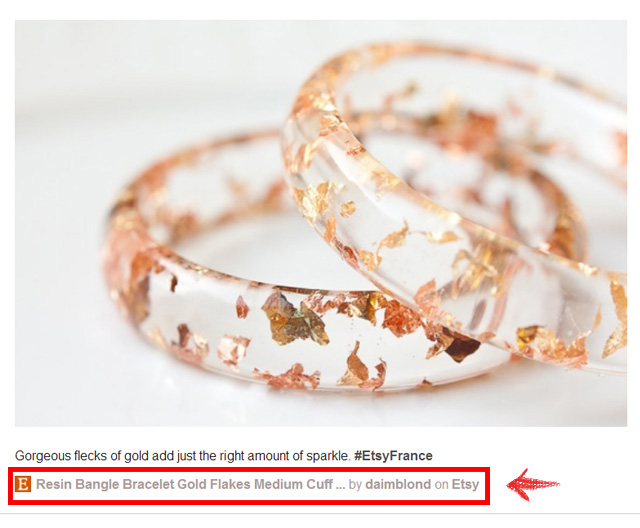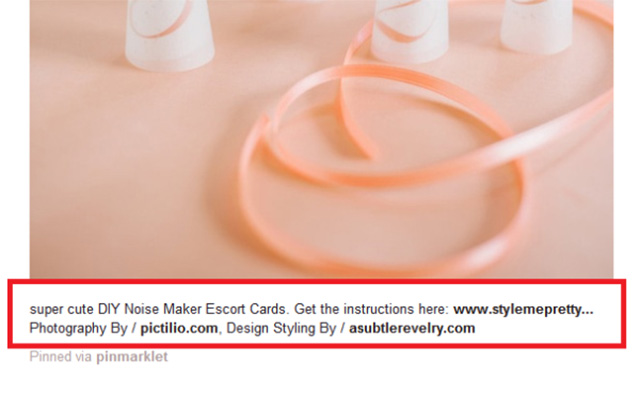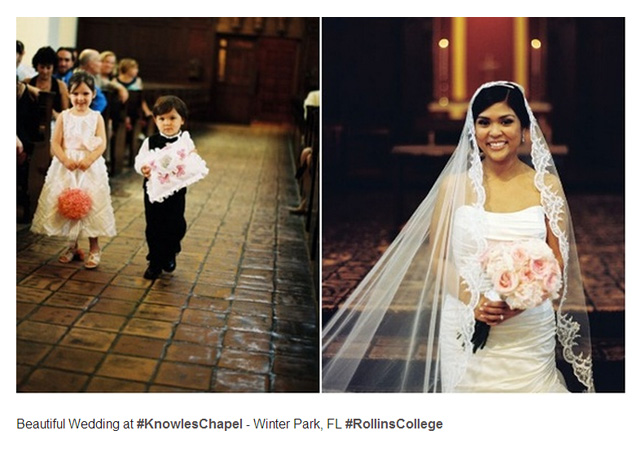SEO Strategies for Pinterest
Once viewed as merely a scrap booking tool for hobbyists, wedding planners and culinary enthusiasts, Pinterest has grown to become one of the top players in the social networking world. What’s more, Pinterest has increasingly captured the attention of marketers as a top referral site for businesses.
According to Shareaholic’s Referral Traffic Report, Pinterest drives more referral traffic than Google+, LinkedIn and YouTube combined. And best of all for businesses, Pinterest users happen to be some of the more affluent members of the social media community. Nearly a third of Pinterest users have a household income of $100,000 or over. 50% of Pinterest users are parents and about 70 percent are female. This translates into visitors from Pinterest spending 70% more at ecommerce sites than visitors referred from other sites.
If you are already using Pinterest for your business and are starting to see some positive results, then it’s time for the next step, optimization!This article will be a comprehensive overview of SEO for Pinterest in ten steps.
1. Create Optimized Company Username
In November of 2012, Pinterest launched Pinterest business accounts. If you have a business and have not yet registered for a business account, take the time to do so before proceeding any further. Having a business account allows you to verify your website, add Pinterest buttons and widgets to your site and add links to your Twitter and Facebook accounts.
The first, most basic, yet vitally important step is to set up an optimized company name and Username. The company name is a no brainer; there is no character limit in the field that indicates your company name. The Username however is confined to 15 characters. For businesses with a short name, this may not prove to be a hindrance. If your full company name does not fit, do your best to choose something easy to spell, memorable and keyword conscious. And lastly, don’t forget to verify your website.2. Optimize ‘About’ Section
Use the 160 characters afforded to you in your about section to provide a keyword rich overview of your business. Be concise and to the point about who you are and what your business does. And of course, don’t forget to list your website in the space provided.
3. Link Back to Your Website
*as of March 2013, Pinterest has made its new look available to its users. As of yet the update is optional. Once the design becomes permanent and mandatory, the use of links is expected to be disallowed and the contents of this this section will be rendered largely irrelevant.
Re-pin links on Pinterest used to be dofollow links, however, falling in line with standard practice on other social networks, Pinterest instituted nofollow links. These links are not recognized by web crawlers for the purposes of search, and so do not wield any SEO authority. Even though these links are no longer relevant to SEO, they can still be useful in terms of user experience and brand awareness. After all, the whole purpose of search engine optimization is to drive users to your website. Make a habit of including a reference link back to your website with your relevant pins. Do the same when re-pinning posts that feature your products or content. Always use the full link for your website in the description and not shortened links as Pinterest is known to mark pins with shortned links as spam. Including a link will reinforce brand association as well as provide another direct pathway for users to your products and/or services.
Links inside pinterest are a stepping stone for users who are interested enough in your content to click, like, re-pin, or comment on your images. Use these links to shorten the gap between the pin and your content or product.
*It’s important to note that with the new changes to Pinterest’s design, a button has been added to the top of each enlarged pin that reads “website.” By allowing users to follow content back to its original source, this feature enhances user experience in the way described above. Also included in the new Pinterest interface are thumbnails of pins from the same source (website) as well as pins from the same board displayed beside enlarged pins.
Make a habit of including a reference link back to your website with your relevant pins. Do the same when re-pinning posts that feature your products or content. Always use the full link for your website in the description and not shortened links as Pinterest is known to mark pins with shortned links as spam. Including a link will reinforce brand association as well as provide another direct pathway for users to your products and/or services.
Links inside pinterest are a stepping stone for users who are interested enough in your content to click, like, re-pin, or comment on your images. Use these links to shorten the gap between the pin and your content or product.
*It’s important to note that with the new changes to Pinterest’s design, a button has been added to the top of each enlarged pin that reads “website.” By allowing users to follow content back to its original source, this feature enhances user experience in the way described above. Also included in the new Pinterest interface are thumbnails of pins from the same source (website) as well as pins from the same board displayed beside enlarged pins.
4. Segment Your Pinboards
There is a great deal of name clutter in boards on Pinterest. To avoid the trap of getting lost in the crowd, be specific, distinctive and keyword conscious in your board descriptions. This is critical to search visibility. Also, consider topical and trending keywords so as to align your board names with words you think users would naturally use in their searches.
5. Speak in a Customer Friendly Language
Avoid using company specific jargon. The terms and phrases within your about section and board descriptions should be optimized to fit the language used by your target audience. Do not use Pinterest as just an advertising board for your business; it should be an open, creative space that speaks to the interests, desires, and lifestyle of your potential clients. Ask yourself what your audience wants, needs and is looking for when perusing through Pinterest. How are you going to hold their attention?
Consider creating a range of boards on a variety of topics that stand independently of your specific products and services. Examples of interesting board topics include: Inspiration board, Infographics board, Meme board, blog board, employee board, contest board and a user generated board. Be sure to choose names for these boards that follow the standards of practice listed above. By building boards that are connected to the communities in which your viewers are a part of you will cultivate a sense of trust in your audience.6. Take Advantage of Pin Descriptions
 Pin descriptions offer arguably the most ample opportunity for text based content on Pinterest. Each Pin gives you 500 characters to work with. This space can be used for anything from notes, to commentary, location and usage information and even recipe instructions. Add links to the original product or content, and if applicable, consider including instructions on product usage or care. According to HubSpot Social Media Scientist Dan Zarrella the most re-pinned and commented on items were accompanied by descriptions ranging from 200-310 characters.
Pin Description writing is a balancing act between keyword usage, user friendly links and overall readability. And for the sake of Pinterest users everywhere, do not resort to the loathsome practice keyword stuffing. So don’t get lazy and complacent about your pin descriptions; say something meaningful that people can connect to.
Pin descriptions offer arguably the most ample opportunity for text based content on Pinterest. Each Pin gives you 500 characters to work with. This space can be used for anything from notes, to commentary, location and usage information and even recipe instructions. Add links to the original product or content, and if applicable, consider including instructions on product usage or care. According to HubSpot Social Media Scientist Dan Zarrella the most re-pinned and commented on items were accompanied by descriptions ranging from 200-310 characters.
Pin Description writing is a balancing act between keyword usage, user friendly links and overall readability. And for the sake of Pinterest users everywhere, do not resort to the loathsome practice keyword stuffing. So don’t get lazy and complacent about your pin descriptions; say something meaningful that people can connect to.
7. Make Sure Images Have Descriptive File Names & Alt Text
Be sure to always format and name your images correctly. Many Pinterest users make the mistake of uploading photos with trivial, standardized names, such as ‘IMG_3678.’ Using a descriptive, keyword conscious filename can assist a search engine in finding your images. When pinning images from your own website make sure the images have alt text associated with them. In general, utilize the same basic approach specified earlier for pin descriptions. Image names should connect your viewers to your content; keyword conscious terms are always preferable to obscure product names or titles.
As it turns out, image size and dimensions can make a difference on Pinterest. Pinterest places no restriction on image height. However, Pinterest does restrict image width to 554 pixels. According to Dan Zarrella’s analysis, taller images appear to be more re-pinnable. A possible explanation for this is that taller images take up more space on users’ Pinterest feeds. This may be a devious tactic but you will do well to use this to your advantage. So get to work on some mesmerizing and elongated infographics!8. Use Hashtags Effectively
*recent updates have changed the functionality of Hashtags within Pinterest
Like Instagram and Twitter, Pinterest has decided to exploit the popularity of hashtags. However, hastags on Pinterest operate a little differently. Hashtags within pinterest are clickable and function as a sort of shortcut to running a pinterest search. Unfortunately, as of March 2013 Pinterest’s new look has rendered hashtags obsolete for SEO purposes. Hashtags used within board descriptions as well as Pin descriptions are ineffective in boosting the search engine visibility of your content.
9. Leverage Long Tail Key Phrases
The Success of Big brands like Netflix, Amazon and Google have shown us that using long tail key phrases isn’t just a niche strategy for small businesses. If you are trying to compete with and stand out against the rest of your industry on Pinterest then writing a generic literal description of your pin will not cut it. Identify niche long tail terms that your potential customers might pin around. The magic formula for Long tail key phrases is to of course find phrases that are commonly searched yet remain relatively uncompetitive.
This is obviously a fairly tricky task, but here is a fairly simple way to approach the problem. The general idea is to achieve greater specificity in multiple aspects of your descriptions. Consider adding details about your location, product use and target audience in your descriptions. In terms of product use, outline creative ways in which customers can use your products and services. This is not only good for SEO but also enhances customer engagement and satisfaction. Also if you want to target a specific audience or demographic you can post gift ideas.10. Improve SEO by Pinning/Repinning Relevant Search Terms and Images
This is a way of piggybacking on the popularity of existing social and commercial trends. Pinning/Repinning events and trends relevant to avid pinners can be a fantastic way to improve your organic search. Combine highly shareable imagery from high traffic sites. Think very carefully about what exactly constitutes highly shareable imagery. This is an opportunity to humanize your brand by branching out from your core business and into more social and trendy territory while increasing your online presence along the way. With Pinterest’s popularity on the rise so too is its role in social media marketing for businesses. Pinterest’s unique platform is a great way to leverage visual and descriptive content and connect with the interests of users on a very immediate and personal level. In conclusion, the focus for any business on Pinterest should be to generate captivating content and build a strong online community of shared interests and preoccupations.
Leverage Pinterest for your Marketing Campaigns with Wishpond’s Pinterest Contest app. Run a Pinterest contest to engage fans to submit and vote on Pinterest boards, on Facebook, Twitter, Websites, and Mobile Devices.
Written by Nick Steeves



